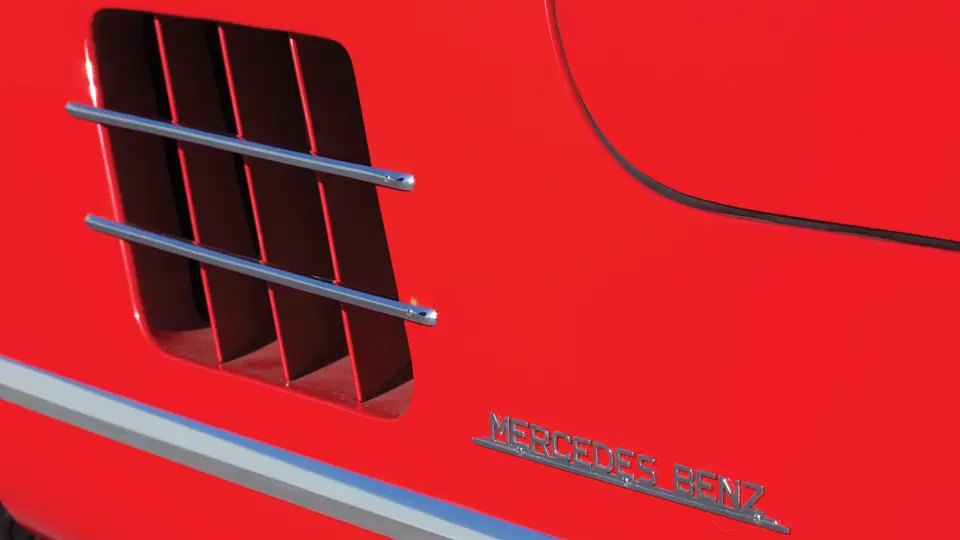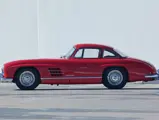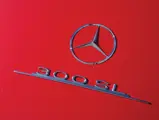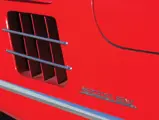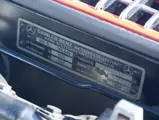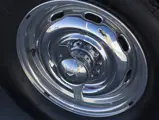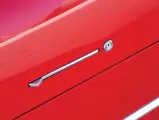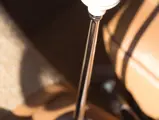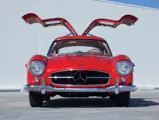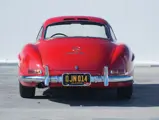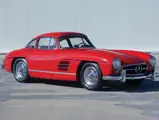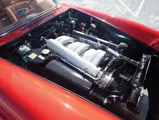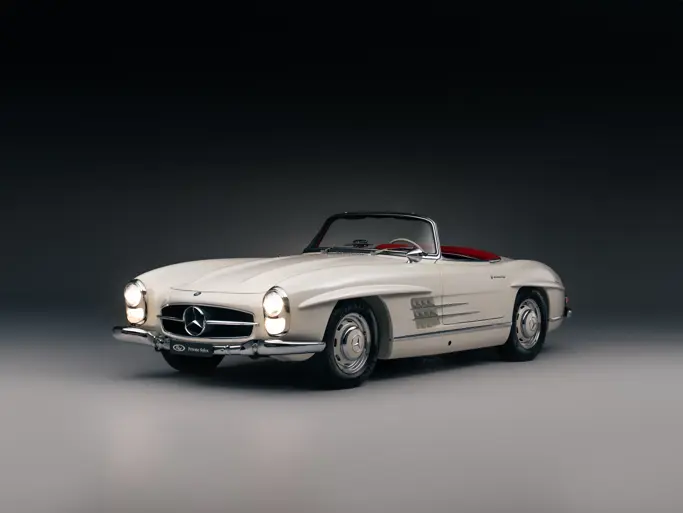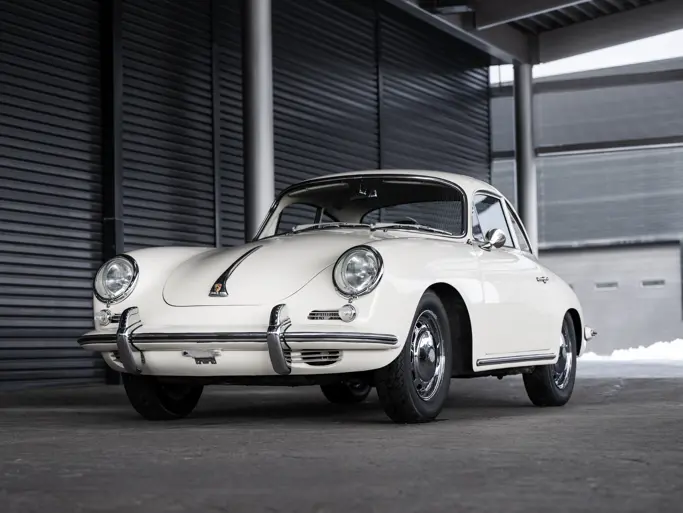
1955 Mercedes-Benz 300 SL Gullwing
{{lr.item.text}}
$1,265,000 USD | Sold
{{bidding.lot.reserveStatusFormatted}}
- From a private Southern California collection
- Three documented enthusiast owners from new
- Under 18,000 actual miles
- Painted by Junior’s House of Color
- Perfectly detailed, correct, and immaculate
215 hp (DIN), 240 hp (SAE), 2,992 cc SOHC six-cylinder engine with Bosch mechanical fuel injection, four-speed manual transmission, coil-spring independent front suspension, coil-spring and swing-axle rear suspension, and four-wheel hydraulic drum brakes. Wheelbase: 94.5 in.
To put the 300SL in context to its time, consider this: Its 182.8-cubic inch engine was smaller than any standard engine (barring the Austin-engined Metropolitan) in any car produced in the United States, “about half the size of a Cadillac, Chrysler, or Lincoln engine,” as famed writer Floyd Clymer pointed out. Yet, its 240 horsepower was competitive with any of the 330-plus-cubic inch V-8s of those American cars. And none of them could even dream about its advertised 161 mph top speed (achieved with an optional competition cam and one of many available rear axle ratios).
Most people today have only ever seen the 300SL at a concours, or maybe on a vintage rally. But underneath the ageless contours is perhaps the most competent all-around machine of the 1950s. So it’s no surprise that most Americans didn’t really know what to make of this car that performed like a race car but was trimmed for luxury.
A few did get it though, and they found a true dual-purpose car that could be used for touring in difficult conditions and even daily driving. On a weekend, one could drive with little preparation to the track, in any conditions, to a win, and afterwards drive back home. In fact, when Bruce Kessler won at the Torrey Pines races in a 300SL, one of the most striking things about the car’s performance was how quietly it ran with stock mufflers in place. Mercedes-Benz sold 11 cars on the West Coast the following week.
“It’s really two cars in one,” 300SL owner Lance Reventlow told Sports Cars Illustrated in 1956. “One is a lamb and the other is a raging lion. And you can turn them off and on with a touch on the throttle. You can putter around town for a year and never call on the fierce side of the car’s dual personality. But the instant you want that real wild performance, it’s there.” Lance’s car was not only a race winner, but it was a concours winner as well.
Yet for all of its on-track success, the 300SL is not a high-strung machine. “You just drive the car,” said a mechanic in the 1950s. “It takes terrific abuse and gives no trouble.” Much as Duesenberg had done before the war, Mercedes-Benz made sure the engine was broken-in before it was delivered. They tested each one for 24 hours on a dynamometer, including six hours at the 6,100 rpm power peak. That was followed by a complete teardown and reassembly, then another eight hours of breaking-in, which was the equivalent of about 2,500 miles of pre-sale testing for each engine. Each one had the compression ratio of that specific engine stamped on the block. It was 8.28 in this case, which was typical.
Chassis number 5500693 was completed on September 1, 1955. It was shipped the following day and eventually delivered in DB353 Light Blue Metallic with 1079 red leather to Hollywood Mercedes-Benz. Its first owner was Knox Ferrand, an attorney and past president of the Automobile Club of Southern California.
For almost the next 20 years, Mr. Farrand maintained the car in his Hancock Park garage in central Los Angeles, accumulating a mere 12,000 miles. In 1974, it came to the attention of a name almost synonymous with Southern California car collecting for more than 40 years, Mr. Bruce Meyer. Mr. Meyer was still in the early years of his collecting then, and negotiations for the car were protracted. The two parties eventually agreed on what might then have been a world record $15,000 price, but only if Mr. Ferrand threw in an unused set of factory luggage he’d acquired, which is still with the car.
Despite the staggering price, Mr. Meyer wasn’t in any way done spending money on his Gullwing, and he chose to have it repainted. Naturally, this wasn’t a back alley job; this was the very best that Junior’s House of Color could do in 1979, which was $25,000 of DB534 fire engine red. Red over red didn’t work, so an interior change was also in order, which included a new set of Code 1068 factory tan leather Mercedes-Benz hides installed by Thomas Interiors. The car was reassembled by 300SL expert Jerry Hjeltness, and then it hit the show circuit.
If this 300SL ever took Second Place at a Southern California car show, it’s not recorded—it was probably the finest car of its type. Not long before parting with it, Mr. Meyer even bought it some jewelry, the finest set of Rudge-style disc knockoff wheels he could find.
Getting it away from Bruce Meyer wasn’t any easier than it had been getting it away from Knox Farrand. With his reputation added to the car, it was a tempting prize for many collectors, but none managed to entice him to sell. After many unsuccessful attempts, it took one of the world’s foremost collectors to do so, and in 2001, it joined the collection of the consignor, the third owner of this car.
A recent inspection reveals an immaculately and fully restored car that is perfectly detailed inside, outside, and underneath. The 17,765 miles showing are confirmed by Mr. Meyer as being correct; given the engine and transmission’s strength, there’s never been a reason for the major driveline components to be separated and lost. The car’s sheet metal, paint, and brightwork are in excellent condition, and importantly, the gaps and operation of the gullwing doors are perfect. As one enthusiast said when he saw it recently, “It’s just a joy, this car. Somebody will love it.” Among the many fabulous cars that Bruce Meyer has owned, he considers this to be the only “one that got away.”
It’s difficult to think of any car from any era still welcomed and competitive at La Carerra Panamericana as well as at any major concours, but the Gullwing 300SL has always been at home just about everywhere. This car, in wonderful condition and with great provenance, will probably find another long-term owner. But, without question, it will be accepted in any company, whether on a lawn or dirt road, as 300SLs always have.






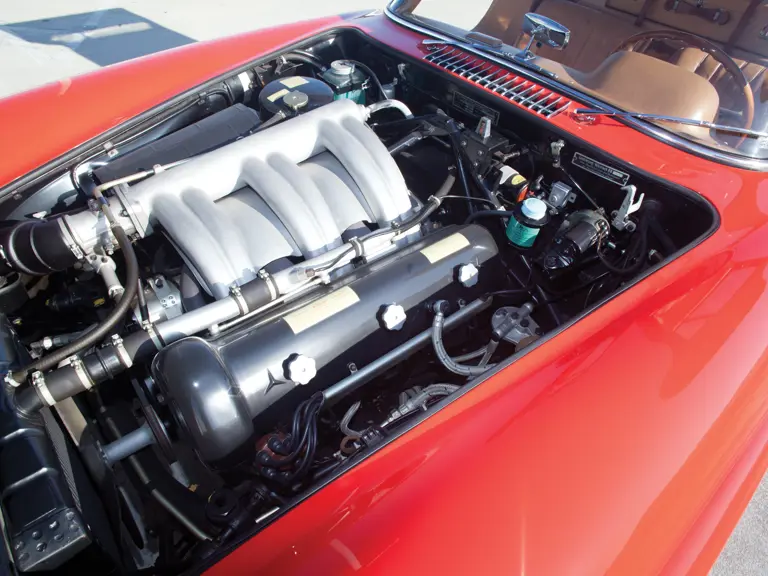
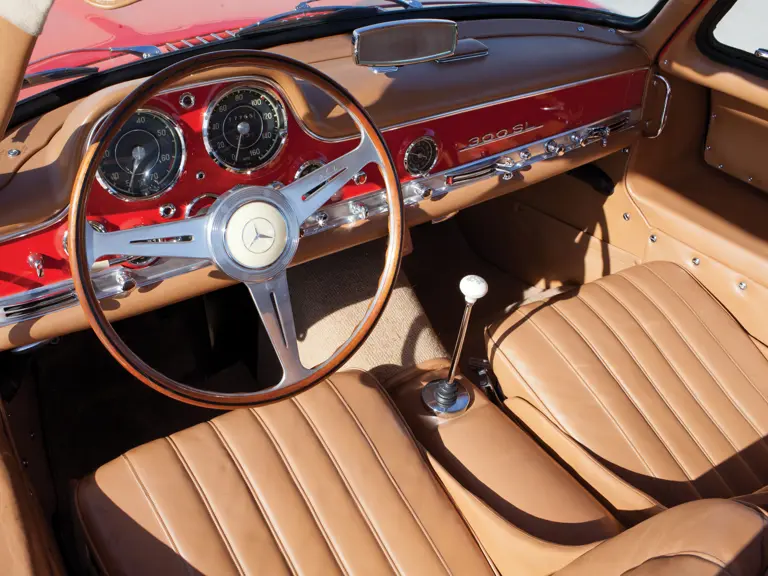

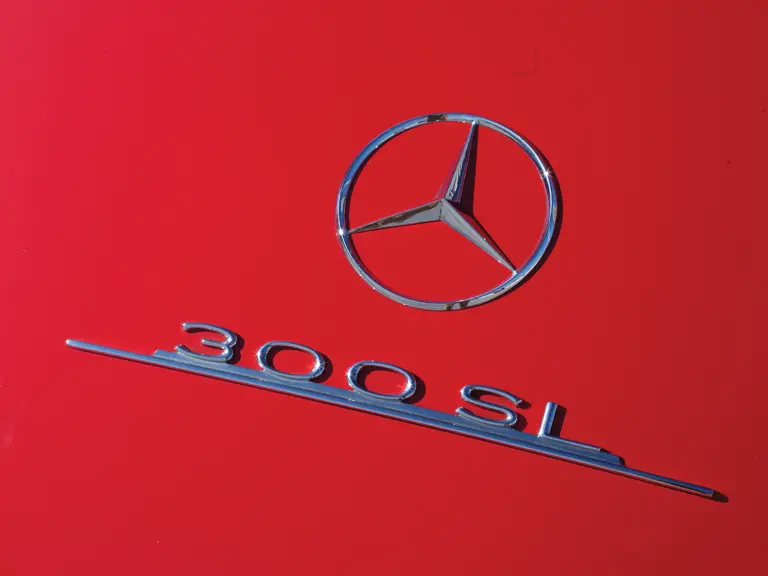
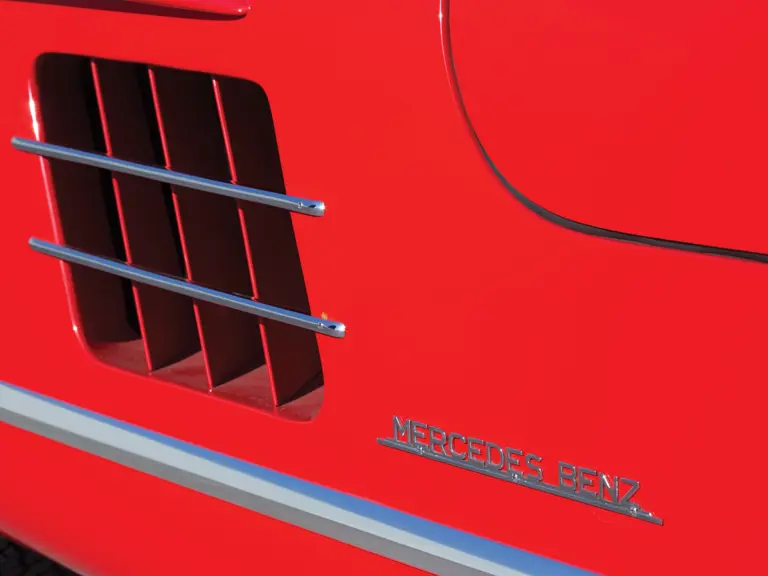
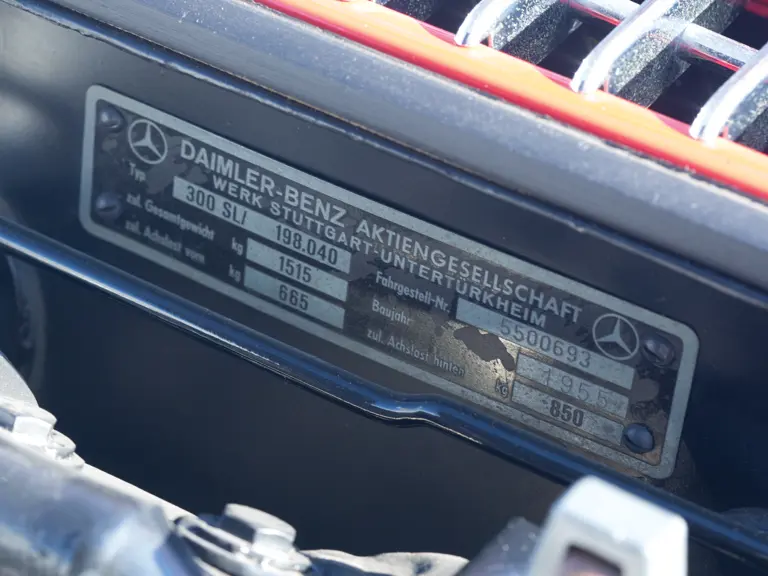
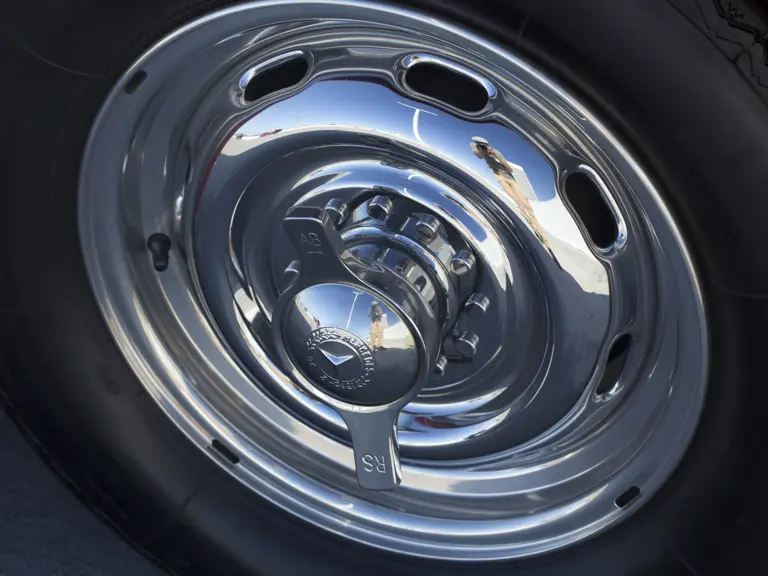
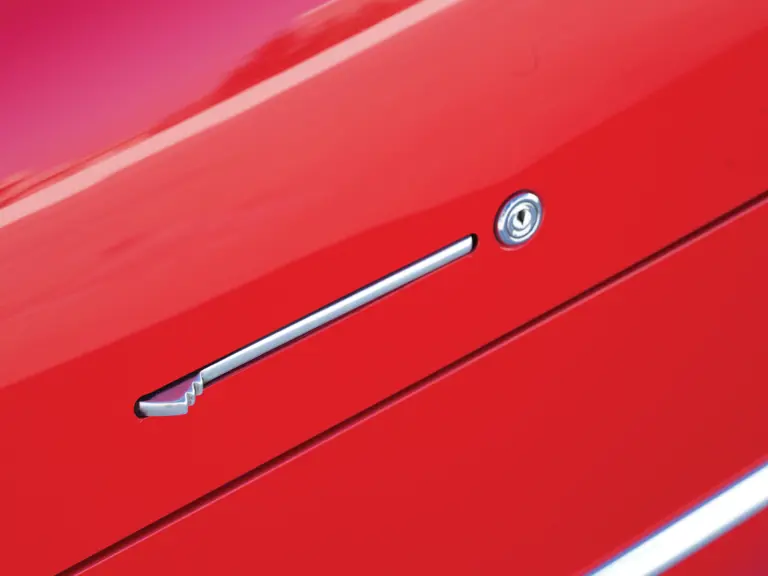
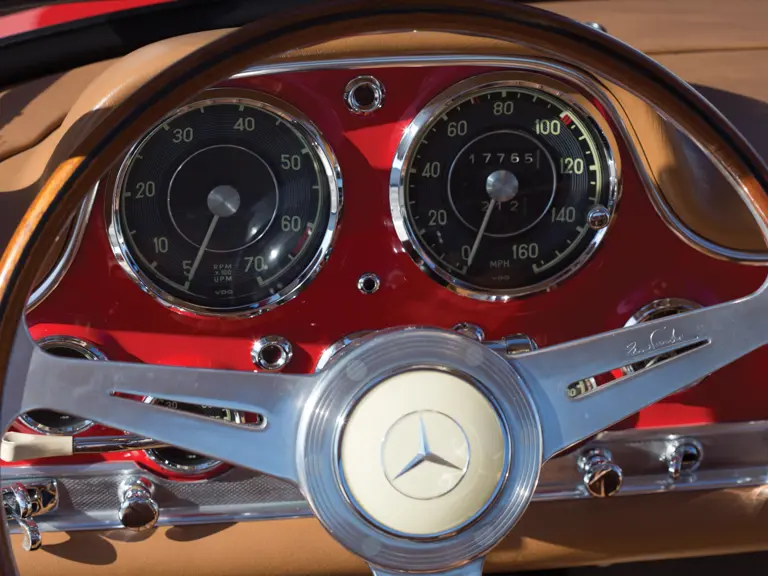


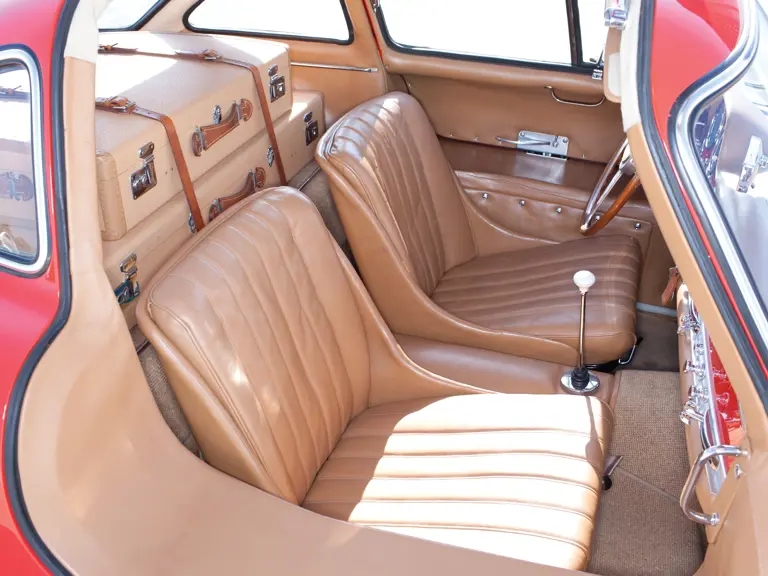

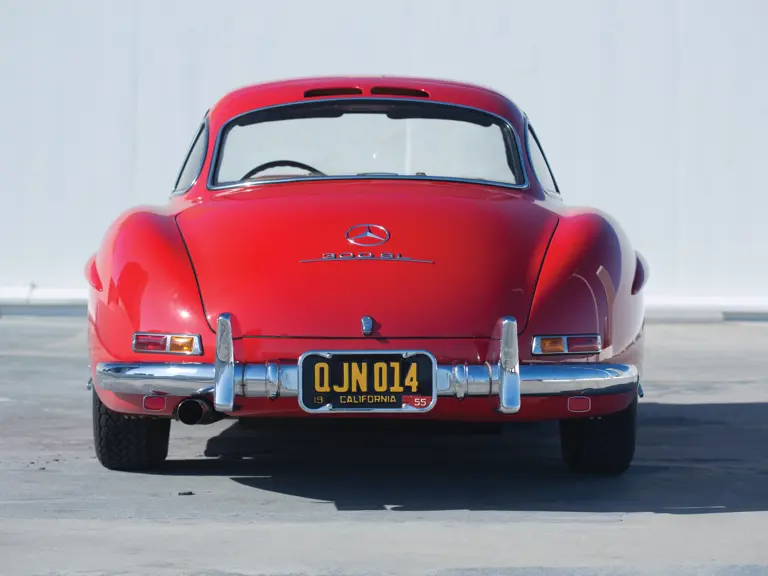
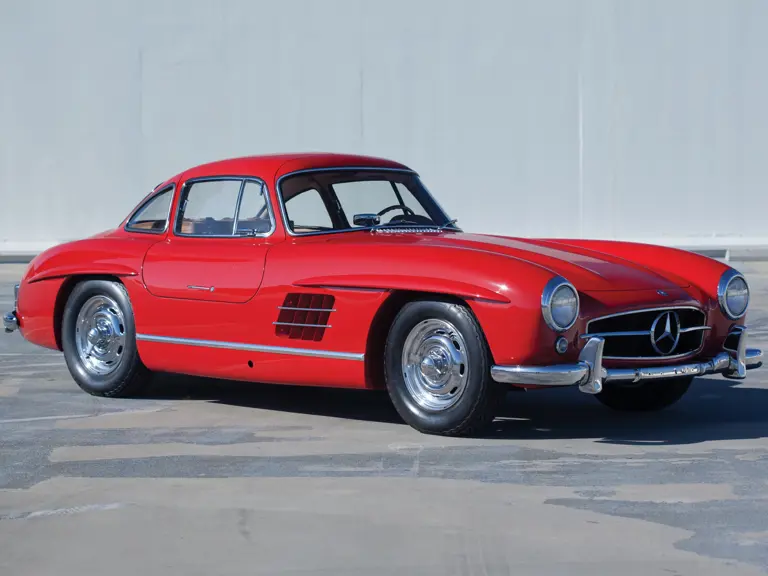
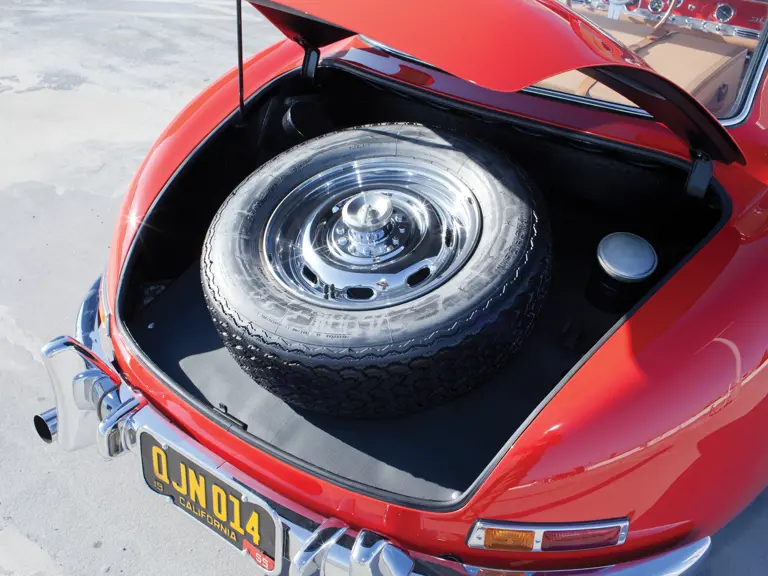
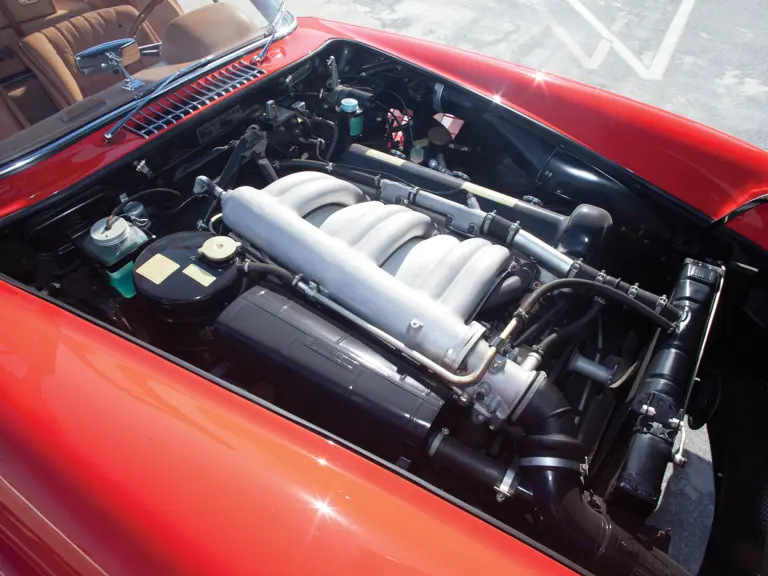
 | Monterey, California
| Monterey, California


